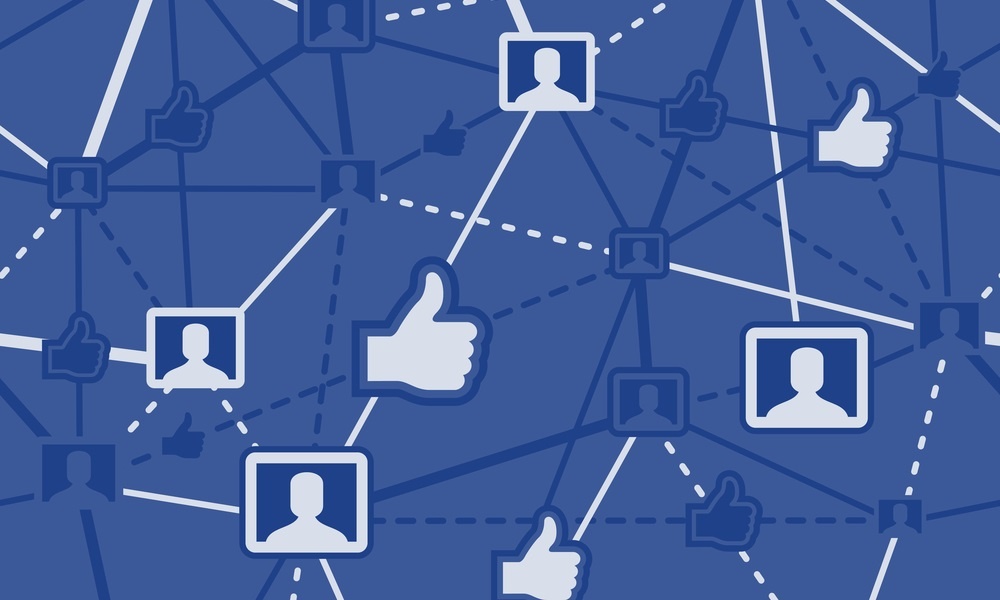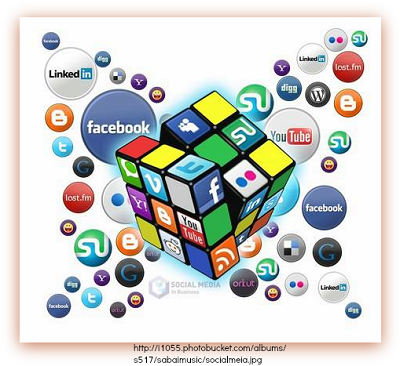Top 6 SaaS Marketing Trends to Watch in 2026
By Jaco Grobbelaar on Mon, Nov 17, 2025 @ 09:10 AM
-1.jpg?width=2000&height=1200&name=Untitled%20design%20(1)-1.jpg)
The SaaS industry has always evolved quickly. As we head into 2026, that pace is showing no signs of slowing. What worked even a year ago is already being reshaped by AI, shifting buyer expectations, and growing pressure to prove measurable ROI.
In 2025, we have seen major shifts: AI tools became everyday co-pilots for marketers, product-led growth became the default go-to-market model, and community-driven brand trust started to outshine traditional paid channels. These weren’t fads; they laid the groundwork for what comes next.
In 2026, the most impactful SaaS marketing trends won’t be about chasing every new tactic. Instead, success will come from aligning technology with creativity, automation with authenticity, and data with human connection.
In this article, we’ll explore six key trends shaping the next wave of SaaS marketing and what forward-looking teams can do today to get ahead of the curve.
Trend 1: AI is No Longer Optional in Content Marketing
For most of 2025, AI was the shiny new toy of SaaS marketing. It was exciting, experimental, and occasionally overwhelming. But as we move into 2026, AI is no longer a novelty. It’s becoming the invisible infrastructure that powers every stage of SaaS content marketing, from ideation and keyword research to personalization and performance analysis.
Where early adopters once focused on speed, the next phase is about precision. The winning teams won’t use AI to replace creativity, but rather to refine it. Content scoring models will identify which assets to repurpose. Even tone and message testing will become more data-driven, ensuring every piece of content aligns with both brand and buyer intent.
The challenge isn’t deciding whether to use AI, but figuring out how to use it effectively. The SaaS firms that thrive will be those that balance automation with authenticity: keeping their voice human, their insights original, and their strategy measurable.
Practical takeaway: If you haven’t already, build an AI-assisted content workflow into your SaaS marketing strategy. Use automation for efficiency, but rely on human judgment to ensure quality, brand alignment, and thought leadership that stands out in an increasingly AI-saturated market.
Trend 2: Turning Data Into Stories
SaaS marketing has typically been built on trying to push product and features. What buyers really want is something that speaks to them, contained in the metrics and the context. In 2026, the brands that stand out will be the ones that take trusted data and use social platforms to deliver personalised, human-centred narratives around it.
Think beyond dashboards and case studies. Social media won’t just be a broadcast channel anymore. It will become a place where insights, micro-stories and community engagement intersect. For example: a short video clip on LinkedIn showing how one customer reduced churn by 18 % (the data point) paired with a post from the user reflecting on what that change meant for them (the personal story). Or a live Q&A where your customer-success team breaks down usage patterns with real users instead of only showing top-line stats.
In this shift:
- Use data as the hook (e.g., “X customers reduced onboarding time by 30 %”)
- Wrap it in a social moment (e.g., “Here’s how we did it, from the customer’s perspective”)
- Turn it into a two-way conversation (e.g., ask for user insights, repost user-generated commentary).
The result: your analytics stop being abstract and start becoming relatable, trust-building content that engages and converts.
Quick tip: If your last few campaigns were built around features or product releases, reframe them through the lens of impact. Ask: What changed for the customer? What tension was resolved? Those answers will form the backbone of more memorable, data-driven stories.
Trend 3: Product-Led Growth Meets Brand-Led Differentiation
Recently, SaaS success has revolved around product-led growth (PLG), enabling software to sell itself through free trials, self-serve onboarding, and a frictionless user experience. But as PLG becomes the norm, it’s no longer a differentiator. In 2026, the SaaS brands that stand out won’t just lead with their product, they’ll lead with their brand.
That doesn’t mean abandoning PLG. It simply means pairing the efficiency of product-led models with the emotional depth of brand-led storytelling. Even in a digital-first market, buyers still make decisions based on trust, familiarity, and perceived value, all of which are built through consistent brand experience. For SaaS companies, that might mean weaving customer stories into onboarding flows, using microcopy and user cues to express brand voice, or creating “moments of delight” that feel human inside an otherwise automated experience. By combining PLG with brand-led strategy, companies can not only convert interest into product use but also transform that use into lasting loyalty.
Trend 4: The Rise of Community-Driven Growth and Social Proof
The era of one-way marketing is ending. In 2026, SaaS marketing will be built less on polished campaigns and more on peer influence. Buyers trust people who’ve used your product, not the people selling it, with 82% of people trusting what other customers say over what the brand says about themselves.
That shift is fueling a wave of community-driven growth, where customers, partners, and advocates play as much of a role in marketing as the brand itself. The most successful SaaS companies will treat their community as a growth engine, not as a support function.
From niche Slack groups and customer-led webinars to open product roadmaps, community-building is becoming a measurable strategy. It fuels retention, creates real-time feedback loops, and generates user-led content that outperforms branded assets.
Social proof will also evolve. Instead of generic testimonials, expect to see data-backed stories, transparent metrics, and unfiltered customer perspectives embedded directly into sales and product experiences. In an AI-saturated market, authenticity is the ultimate differentiator.
Action step: Start small. Create spaces where your most engaged users can connect, whether that’s a private channel, beta group, or customer advisory board. Give them access, ask for input, and amplify their voices. The community you build today will become your most credible marketing channel tomorrow.
Trend 5: Privacy-First, Trust-Centric Marketing Becomes a Differentiator
As data regulations tighten and AI tools reshape how we gather and use information, SaaS marketers face a defining challenge in 2026: earning (and keeping) trust.
The marketing ecosystem built on third-party cookies and opaque data collection is rapidly disappearing. Buyers are more informed, more privacy-aware, and more selective about the brands they engage with. Transparency and ethics go beyond legal safeguards; they’re increasingly key factors in buyers’ decisions. In response, leading SaaS companies are adopting privacy-first strategies that treat transparency as a core brand value, not as a checkbox.
This shift is as much about perception as policy. Users want to know why you collect data, how you use it, and what’s in it for them. When brands communicate that clearly through consent-based personalization, transparent preference centers, and secure, user-controlled data models, they don’t just stay compliant. They build long-term credibility.
In 2026, trust will be the new growth currency. SaaS companies that integrate privacy, ethics, and empathy into their marketing will stand out in a crowded, increasingly automated landscape.
Pro tip: Make your data practices part of your storytelling. A clear privacy statement, a transparent opt-in flow, or a behind-the-scenes look at how you handle customer data can do more for brand trust than any campaign.
Trend 6: Answer Engine Optimization (AEO) Becomes the New SEO
AI-powered search is changing the way buyers find information, and with it, traditional SEO is giving way to Answer Engine Optimization (AEO). AEO is all about making your content easy for AI tools (like ChatGPT and Gemini) to surface, summarize, and cite.
In 2026, the question isn’t just “Can we rank for this keyword?” — it’s “Can AI trust us enough to quote us?”. SaaS marketers will need to adapt their content for both humans and AI, making sure every page demonstrates expertise, authority, and relevance. That means crafting content that answers questions directly, using schema markup and FAQs, and maintaining a consistent voice that builds brand trust even when the audience encounters your message through an AI-generated summary.
For SaaS companies, this marks a new kind of visibility; one driven less by backlinks and more by credibility. The brands that succeed will treat AEO as part of their thought leadership, creating clear, high-quality insights that AI can reference and buyers can trust.
How to Prepare Your 2026 SaaS Marketing Strategy
The biggest SaaS digital marketing wins in 2026 won’t come from chasing every new tool or trend. They’ll come from the companies that connect these shifts into a clear, cohesive strategy; one that aligns technology, brand, and audience intent.
Here’s how to get started:
- Audit your 2025 efforts: Identify which channels, campaigns, or content types delivered meaningful ROI, not just traffic or clicks.
- Layer AI intentionally: Use it to scale smartly, not noisily. Automate where it adds clarity and speed, but keep creative direction firmly human.
- Rebuild around trust: Treat transparency, data ethics, and authenticity as core brand assets. They’ll influence conversions more than pricing ever will.
- Invest in your ecosystem: Build communities, deepen customer stories, and turn your product experience into an extension of your marketing. Don’t stop at acquisition; expand marketing touchpoints across onboarding, adoption, and renewal to turn satisfied users into lifelong advocates.
In 2026, SaaS marketing won’t be about shouting louder. It’ll be about aligning clearly. Marketing, sales, and customer success need to work together to create a seamless journey, and the teams that approach it like RevOps leaders will drive the most efficient growth.
Final Thoughts
SaaS marketing’s future won’t favor the fastest movers, but the most adaptable. As automation speeds up and competition grows, the real advantage comes from clarity — understanding your brand, knowing what your audience values, and connecting those dots consistently.
2026 isn’t just another year of change. It’s the moment to turn marketing complexity into momentum, and the brands that do will define the next era of SaaS growth.
If you’re ready to strengthen your marketing foundation for the year ahead, explore how BroadVision Marketing helps SaaS brands build scalable, connected growth systems that actually convert.
You May Also Like
These Related Stories

7 Marketing Trends For Small Businesses To Consider In 2021

Facebook Remarketing And The Costs Of Social Media

.png?width=302&height=75&name=BVM%20Logo%20-%20transparent%20(1).png)

No Comments Yet
Let us know what you think